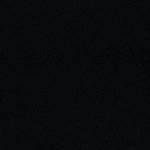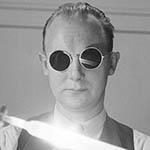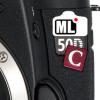
Brian Caldwell
-
Posts
153 -
Joined
-
Last visited
Reputation Activity
-
 Brian Caldwell got a reaction from Xavier Plagaro Mussard in Where did all the single focus solutions come from?
Brian Caldwell got a reaction from Xavier Plagaro Mussard in Where did all the single focus solutions come from?
Note, at the time the Isco patent was issued in 1970 the law was that the lifetime of a patent was 17 years from the date of issue. When a patent expires the time-limited right of the assignee to a monopoly also expires, and the technology becomes part of the public domain. So, its been completely legal to manufacture and sell Iscorama style systems since 1987, almost 30 years now!
-
 Brian Caldwell got a reaction from TheRenaissanceMan in GH4 and Canon EF Speed Booster question - which lens?
Brian Caldwell got a reaction from TheRenaissanceMan in GH4 and Canon EF Speed Booster question - which lens?
As long as you use a fullframe (24x36mm format) master lens, then both the 0.71x ULTRA and 0.64x XL will work fine. The ULTRA is a little better corrected in the outer part of the image, but this is mainly important if you want critically sharp results at f/1.0 with a Sigma ART or Zeiss Otus, and would not be noticeable with a slow lens like the Canon 24-105. If you plan to use an APS-C lens such as the Canon 17-55/2.8, then you should be aware that you may encounter slight vignetting when shooting HD (not 4k) with the 0.64x XL. The reason for this is that even though the XL itself covers the entire m43 image just fine, the image circle of the lens is too small to cover after it is multiplied by 0.64.
-
 Brian Caldwell got a reaction from Kubrickian in GH4 and Canon EF Speed Booster question - which lens?
Brian Caldwell got a reaction from Kubrickian in GH4 and Canon EF Speed Booster question - which lens?
As long as you use a fullframe (24x36mm format) master lens, then both the 0.71x ULTRA and 0.64x XL will work fine. The ULTRA is a little better corrected in the outer part of the image, but this is mainly important if you want critically sharp results at f/1.0 with a Sigma ART or Zeiss Otus, and would not be noticeable with a slow lens like the Canon 24-105. If you plan to use an APS-C lens such as the Canon 17-55/2.8, then you should be aware that you may encounter slight vignetting when shooting HD (not 4k) with the 0.64x XL. The reason for this is that even though the XL itself covers the entire m43 image just fine, the image circle of the lens is too small to cover after it is multiplied by 0.64.
-
 Brian Caldwell got a reaction from andy lee in GH4 and Canon EF Speed Booster question - which lens?
Brian Caldwell got a reaction from andy lee in GH4 and Canon EF Speed Booster question - which lens?
As long as you use a fullframe (24x36mm format) master lens, then both the 0.71x ULTRA and 0.64x XL will work fine. The ULTRA is a little better corrected in the outer part of the image, but this is mainly important if you want critically sharp results at f/1.0 with a Sigma ART or Zeiss Otus, and would not be noticeable with a slow lens like the Canon 24-105. If you plan to use an APS-C lens such as the Canon 17-55/2.8, then you should be aware that you may encounter slight vignetting when shooting HD (not 4k) with the 0.64x XL. The reason for this is that even though the XL itself covers the entire m43 image just fine, the image circle of the lens is too small to cover after it is multiplied by 0.64.
-
 Brian Caldwell got a reaction from captou in GH4 and Canon EF Speed Booster question - which lens?
Brian Caldwell got a reaction from captou in GH4 and Canon EF Speed Booster question - which lens?
As long as you use a fullframe (24x36mm format) master lens, then both the 0.71x ULTRA and 0.64x XL will work fine. The ULTRA is a little better corrected in the outer part of the image, but this is mainly important if you want critically sharp results at f/1.0 with a Sigma ART or Zeiss Otus, and would not be noticeable with a slow lens like the Canon 24-105. If you plan to use an APS-C lens such as the Canon 17-55/2.8, then you should be aware that you may encounter slight vignetting when shooting HD (not 4k) with the 0.64x XL. The reason for this is that even though the XL itself covers the entire m43 image just fine, the image circle of the lens is too small to cover after it is multiplied by 0.64.
-
 Brian Caldwell got a reaction from Cinegain in Canon have "surprise" at NAB 2016
Brian Caldwell got a reaction from Cinegain in Canon have "surprise" at NAB 2016
Can a camera that only offers a EF or PL lens mount truly be considered mirrorless? True, there is no mirror, but if you throw away the possibility of short BFL optics what is the point?
-
 Brian Caldwell got a reaction from BrooklynDan in SLR Magic Anamorphot CINE PL Set 35/50/70 - a shoot in London and Brighton with the Sony A7S II and Samsung NX1
Brian Caldwell got a reaction from BrooklynDan in SLR Magic Anamorphot CINE PL Set 35/50/70 - a shoot in London and Brighton with the Sony A7S II and Samsung NX1
The Panavision G 25mm does have severe barrel distortion. I haven't seen the new Cooke 25mm yet - does it have the same weird mix of pincushion and barrel distortion that the other Cooke anamorphics have?
-
 Brian Caldwell got a reaction from TSV in How to deal with Heat Haze!?
Brian Caldwell got a reaction from TSV in How to deal with Heat Haze!?
Not sure if any of this will help in your situation, but try keeping the focal length as short as possible, using the smallest feasible aperture (note that diffraction may not be as objectionable compared to image degradation due to heat haze), shoot when the ground and air are close to the same temperature (e.g., at dawn, after a rainstorm, etc.), and maybe try some image stacking/averaging techniques used by amateur astronomers.
-
 Brian Caldwell got a reaction from Caleb Genheimer in 1.79x Squeeze Anamorphic
Brian Caldwell got a reaction from Caleb Genheimer in 1.79x Squeeze Anamorphic
The responses here have been very thoughtful, and have given me much to consider. I may modify my product direction a bit, but on the whole, it seems that my ideas aren't entirely crazy.
-
 Brian Caldwell got a reaction from TheRenaissanceMan in Great Modern Lens Article!
Brian Caldwell got a reaction from TheRenaissanceMan in Great Modern Lens Article!
I certainly wouldn't argue that old lenses might not be preferable in certain circumstances. After all, there are a number of cine rental houses that make tons of money from large inventories of vintage glass. However, the author of the article in question should at least do careful comparisons to make his points, because it seems to me that lighting is the dominant effect that he's demonstrating, not lens differences. And his attempts to appear scientific by making those ternary charts is just a complete joke. I'm shocked that so many people on his blog and elsewhere just accept them as having some sort of meaning without questioning.
Any 35/1.4 FF SLR lens plus a 0.71x Speed Booster will give a 25/1.0 for aps-c.
-
 Brian Caldwell got a reaction from Mat Mayer in Great Modern Lens Article!
Brian Caldwell got a reaction from Mat Mayer in Great Modern Lens Article!
I probably should have stayed away from this topic, but I found the article so utterly revolting that I just couldn't help myself. Its difficult to even begin a thorough critique, and I'm not going to do it here. Suffice to say that he relies almost entirely on non-standard, non-optical terminology (e.g., 3D, tonality, micro contrast, flat), and he never bothers to define these terms in a precise and unambiguous way. Lenses can be fully characterized by things that are well-defined and can actually be measured, such as MTF, veiling glare, distortion, transmission vs. wavelength, etc.. Why rely on pseudo-scientific nonsense when proper characterization methods are well established? He then goes on to show images that supposedly illustrate his points, but none of the images are actually carefully done comparisons under fixed lighting conditions, post processing, etc., so they are absolutely worthless as far as I'm concerned. He also makes a bunch of ternary diagrams that make absolutely no sense at all - "line of realism"??? WTF??? And his obsession with the number of elements in a design is absolutely bizzare.
-
 Brian Caldwell got a reaction from jonpais in Great Modern Lens Article!
Brian Caldwell got a reaction from jonpais in Great Modern Lens Article!
I probably should have stayed away from this topic, but I found the article so utterly revolting that I just couldn't help myself. Its difficult to even begin a thorough critique, and I'm not going to do it here. Suffice to say that he relies almost entirely on non-standard, non-optical terminology (e.g., 3D, tonality, micro contrast, flat), and he never bothers to define these terms in a precise and unambiguous way. Lenses can be fully characterized by things that are well-defined and can actually be measured, such as MTF, veiling glare, distortion, transmission vs. wavelength, etc.. Why rely on pseudo-scientific nonsense when proper characterization methods are well established? He then goes on to show images that supposedly illustrate his points, but none of the images are actually carefully done comparisons under fixed lighting conditions, post processing, etc., so they are absolutely worthless as far as I'm concerned. He also makes a bunch of ternary diagrams that make absolutely no sense at all - "line of realism"??? WTF??? And his obsession with the number of elements in a design is absolutely bizzare.
-
 Brian Caldwell got a reaction from SR in Great Modern Lens Article!
Brian Caldwell got a reaction from SR in Great Modern Lens Article!
I probably should have stayed away from this topic, but I found the article so utterly revolting that I just couldn't help myself. Its difficult to even begin a thorough critique, and I'm not going to do it here. Suffice to say that he relies almost entirely on non-standard, non-optical terminology (e.g., 3D, tonality, micro contrast, flat), and he never bothers to define these terms in a precise and unambiguous way. Lenses can be fully characterized by things that are well-defined and can actually be measured, such as MTF, veiling glare, distortion, transmission vs. wavelength, etc.. Why rely on pseudo-scientific nonsense when proper characterization methods are well established? He then goes on to show images that supposedly illustrate his points, but none of the images are actually carefully done comparisons under fixed lighting conditions, post processing, etc., so they are absolutely worthless as far as I'm concerned. He also makes a bunch of ternary diagrams that make absolutely no sense at all - "line of realism"??? WTF??? And his obsession with the number of elements in a design is absolutely bizzare.
-
 Brian Caldwell got a reaction from kidzrevil in Great Modern Lens Article!
Brian Caldwell got a reaction from kidzrevil in Great Modern Lens Article!
I probably should have stayed away from this topic, but I found the article so utterly revolting that I just couldn't help myself. Its difficult to even begin a thorough critique, and I'm not going to do it here. Suffice to say that he relies almost entirely on non-standard, non-optical terminology (e.g., 3D, tonality, micro contrast, flat), and he never bothers to define these terms in a precise and unambiguous way. Lenses can be fully characterized by things that are well-defined and can actually be measured, such as MTF, veiling glare, distortion, transmission vs. wavelength, etc.. Why rely on pseudo-scientific nonsense when proper characterization methods are well established? He then goes on to show images that supposedly illustrate his points, but none of the images are actually carefully done comparisons under fixed lighting conditions, post processing, etc., so they are absolutely worthless as far as I'm concerned. He also makes a bunch of ternary diagrams that make absolutely no sense at all - "line of realism"??? WTF??? And his obsession with the number of elements in a design is absolutely bizzare.
-
 Brian Caldwell got a reaction from jcs in Great Modern Lens Article!
Brian Caldwell got a reaction from jcs in Great Modern Lens Article!
I probably should have stayed away from this topic, but I found the article so utterly revolting that I just couldn't help myself. Its difficult to even begin a thorough critique, and I'm not going to do it here. Suffice to say that he relies almost entirely on non-standard, non-optical terminology (e.g., 3D, tonality, micro contrast, flat), and he never bothers to define these terms in a precise and unambiguous way. Lenses can be fully characterized by things that are well-defined and can actually be measured, such as MTF, veiling glare, distortion, transmission vs. wavelength, etc.. Why rely on pseudo-scientific nonsense when proper characterization methods are well established? He then goes on to show images that supposedly illustrate his points, but none of the images are actually carefully done comparisons under fixed lighting conditions, post processing, etc., so they are absolutely worthless as far as I'm concerned. He also makes a bunch of ternary diagrams that make absolutely no sense at all - "line of realism"??? WTF??? And his obsession with the number of elements in a design is absolutely bizzare.
-
 Brian Caldwell got a reaction from Palpet in Great Modern Lens Article!
Brian Caldwell got a reaction from Palpet in Great Modern Lens Article!
Sorry, but somebody's got to say it. This has to be the worst piece of trash writing ever done about lenses. The author has absolutely no clue what he is talking about, and should be ignored.
-
 Brian Caldwell got a reaction from Zak Forsman in Great Modern Lens Article!
Brian Caldwell got a reaction from Zak Forsman in Great Modern Lens Article!
Sorry, but somebody's got to say it. This has to be the worst piece of trash writing ever done about lenses. The author has absolutely no clue what he is talking about, and should be ignored.
-
 Brian Caldwell got a reaction from jonpais in Great Modern Lens Article!
Brian Caldwell got a reaction from jonpais in Great Modern Lens Article!
Sorry, but somebody's got to say it. This has to be the worst piece of trash writing ever done about lenses. The author has absolutely no clue what he is talking about, and should be ignored.
-
 Brian Caldwell got a reaction from Nikkor in Great Modern Lens Article!
Brian Caldwell got a reaction from Nikkor in Great Modern Lens Article!
Sorry, but somebody's got to say it. This has to be the worst piece of trash writing ever done about lenses. The author has absolutely no clue what he is talking about, and should be ignored.
-
 Brian Caldwell got a reaction from Flynn in IDEA: Anamorphic Metabones Adapter
Brian Caldwell got a reaction from Flynn in IDEA: Anamorphic Metabones Adapter
The main technical hurdle is that focal reducers reduce the physical length of a lens in addition to reducing the focal length. So if you simply build a focal reducer from cylinders you would wind up with many millimeters of astigmatism throughout the image. An even bigger concern, as valid points out, is that you don't get any of the desirable anamorphic artifacts with a rear anamorphic attachment.
-
 Brian Caldwell got a reaction from Tito Ferradans in IDEA: Anamorphic Metabones Adapter
Brian Caldwell got a reaction from Tito Ferradans in IDEA: Anamorphic Metabones Adapter
The main technical hurdle is that focal reducers reduce the physical length of a lens in addition to reducing the focal length. So if you simply build a focal reducer from cylinders you would wind up with many millimeters of astigmatism throughout the image. An even bigger concern, as valid points out, is that you don't get any of the desirable anamorphic artifacts with a rear anamorphic attachment.
-
 Brian Caldwell got a reaction from Timotheus in IDEA: Anamorphic Metabones Adapter
Brian Caldwell got a reaction from Timotheus in IDEA: Anamorphic Metabones Adapter
The main technical hurdle is that focal reducers reduce the physical length of a lens in addition to reducing the focal length. So if you simply build a focal reducer from cylinders you would wind up with many millimeters of astigmatism throughout the image. An even bigger concern, as valid points out, is that you don't get any of the desirable anamorphic artifacts with a rear anamorphic attachment.
-
 Brian Caldwell got a reaction from Julian in 1.79x Squeeze Anamorphic
Brian Caldwell got a reaction from Julian in 1.79x Squeeze Anamorphic
I've recently started numerous anamorphic lens projects based on the idea that 1.79x squeeze is the ideal ratio when dealing with a 4:3 sensor . It's often stated that 2x squeeze on 4:3 gives you the DCI standard 2.39:1 scope ratio, but of course this isn't quite true. If you really want a perfect mapping of 4:3 to 2.39:1 without having to crop the sides, then the correct math is: 2.39/(4/3) = 1.7925, which I'll round off to 1.79. So, for the ARRI Alexa, RED Dragon and Panasonic GH4 used in 4:3 mode it seems to me that 1.79x is ideal. Also, if you consider the Alexa in its Open Gate format (1.55:1) you get 1.55 * 1.79 = 2.77:1, which is almost exactly equal to the classic Ultra Panavision 70 (2.76:1 aspect ratio).
You might be concerned that 1.79x wouldn't give enough anamorphic artifacts, but based on my experience so far it seems that the artifacts are very similar to 2x, and in addition there are significant advantages in size, weight, cost, and image quality. Some time ago I built a 1.80x prototype that used very traditional rear-group focusing with counter-rotating astigmatizer aberration compensation, and found that it compared very favorably to a similar-spec 2x 140mm Hawk V-Lite:
So, my question is, since I'm about to start spending money like crazy developing this stuff, am I crazy to be going in this direction?
-
 Brian Caldwell got a reaction from Timotheus in 1.79x Squeeze Anamorphic
Brian Caldwell got a reaction from Timotheus in 1.79x Squeeze Anamorphic
The responses here have been very thoughtful, and have given me much to consider. I may modify my product direction a bit, but on the whole, it seems that my ideas aren't entirely crazy.
-
 Brian Caldwell got a reaction from shanebrutal in 1.79x Squeeze Anamorphic
Brian Caldwell got a reaction from shanebrutal in 1.79x Squeeze Anamorphic
I'm working on two attachments, plus a series of integrated primes. The smaller of the attachments would have 72mm rear threads, and I want to price it so that independent film makers and videographers can afford it. I'm not far enough along on the other products to have a good feel for pricing yet, but its my intention to compete with the best products out there (e.g., Hawk, Cooke, Panavision, etc.) at a very compelling price.












